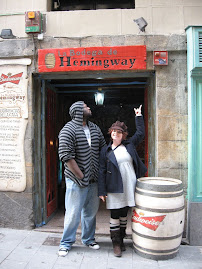"The analysis of an epidemic does not involve the recognition of the general form of the disease, by placing it in the abstract space of nosology, but the rediscovery, beneath the general signs, of the particular process, which varies according to circumstances from one epidemic to another, and which weaves from the cause to the morbid form a web common to all the sick, but peculiar to this moment in time and space" (BC 24). This statement is increasingly interesting in light of Grinker's book on the "epidemic" of autism.
"Transmission from one individual to another is never the essence of an epidemic" (BC 24).
"Whether contagious or not, an epidemic has a sort of historical individuality, hence the need to employ a complex method of observation when dealing with it. Being a collective phenomenon, it requires a multiple gaze; a unique process, it must be described in terms of its special, accidental, unexpected qualities" (BC 25).
"A medicine of epidemics could exist only if supplemented by a police" (BC 26)-- i.e., an organization governing the behaviors of those "stricken" and those "in danger." "a political status for medicine and the constitution, at state level, of a medical consciousness whose constant task would be to provide information, supervision, and constraint, all of which 'relate as much to the police as to the field of medicine proper'" (BC 26).
"What defines the act of medical knowledge in its concrete form is not, therefore, the encounter between doctor and patient, nor is it the confrontation of a body of knowledge and a perception; it is the systematic intersection of two series of information, each homogeneous but alien to each other--two series that embrace an infinite set of separate events, but whose intersection reveals, in its isolable dependence, the individual fact. A sagittal figure of knowledge" (BC 30).
"the myth of a total disappearance of disease in an untroubled, dispassionate society restored to its original state of health. But we must not be misled by the manifest contradiction of the two themes: each of these oneiric figures expresses, as if in black and white, the same picture of medical experience. The two dreams are isomorphic: the first expressing in a very positive way the strict, militant, dogmatic medicalization of society, by way of a quasi-religious conversion, and the establishment of a therapeutic clergy; the second expressing the same medicalization, but in a triumphant, negative way, that is to say, the volatilization of disease in a corrected, organized, and ceaselessly supervised environment, in which medicine itself would finally disappear, together with its object and its raison d'etre" (BC 32).
This passage illustrates well the need for a Humanities-based approach to autism studies--1. Almost worship of empiricism and medicalization of disease that isn't beneficial. Doctors as deities who can do no wrong. But, empiricism doesn't exist in a vacuum. Medicine carried out by doctors who are influenced by society as much as they are influencing it. Humanities emphasis on how society is shaped by the way that we think about it--through language--needed to understand the individuals studied and to reiterate the "human" behind the science, both those studied and those studying. 2. This medicalization leads to the Positivistic approach to medicine and the body as something that should be perfected. The imperfect body that needs to be "fixed" or "cured."
"Are not doctors the priests of the body?" (BC 32).
Thursday, July 19, 2007
Subscribe to:
Post Comments (Atom)








No comments:
Post a Comment